
Channel planning refers to organising different touchpoints to achieve a set communication objective. It essentially answers this question: "Where do I show up to connect with my audience?"
With a wide variety of channels and platforms to choose from, it is easy to be carried away by the latest and biggest platforms! Resist the temptation of jumping onto the bandwagon by returning to your objective - it will be your true north in navigating your channel planning.
Stay grounded with the consumer journey
To effectively select channels and platforms, revisit who you are engaging with and which stage you are doing so by using the consumer experience tool. Your touchpoint identification will be sharper after knowing where your consumers are, while giving you better bang for your investment buck.
Refer to the table below for some recommended digital formats at each stage in the consumer journey.
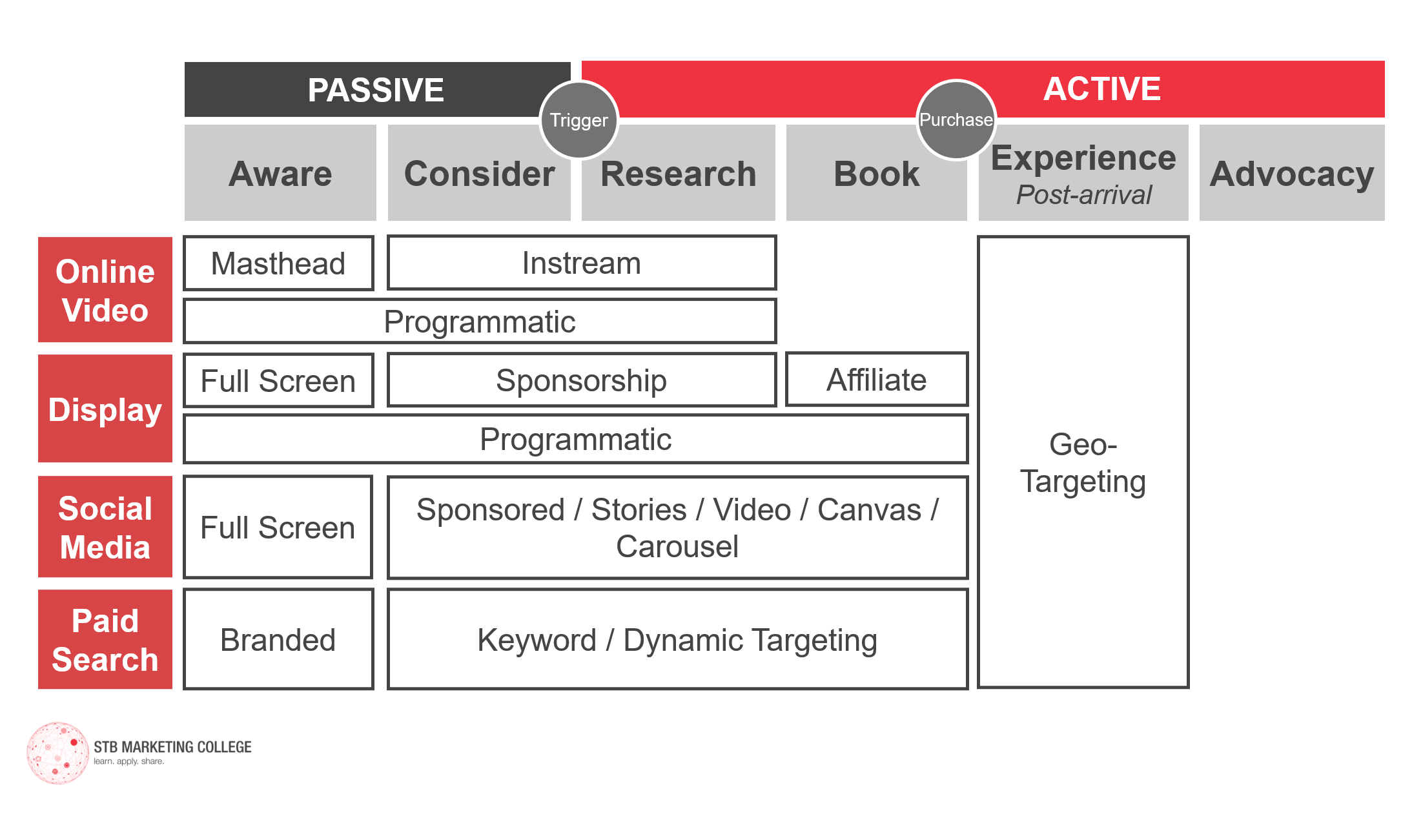
At the awareness stage, you will need something to grab attention. If you want to convert consumers at a later stage of their consumer journey, you may want to appear less aggressive and invasive. As part of your resource planning, put a frequency cap for some of the digital formats to ensure you have a broader reach at the earlier stages of the consumer journey (e.g. if you are paying for 20,000 impressions, it is better that 5,000 persons saw your ads four times than for 1,000 persons to see your ads for 20 times when it is about driving awareness). Moreover, if you are tapping on multiple channels that target a similar audience profile, chances are they will see your ads again elsewhere.
If you are unsure how to split your budget across channels, use the 70-20-10 rule as a guide. 70-20-10 rule mean that 70% of your investment should go into your tried and tested channels, 20% into emerging channels and 10% into completely new areas.
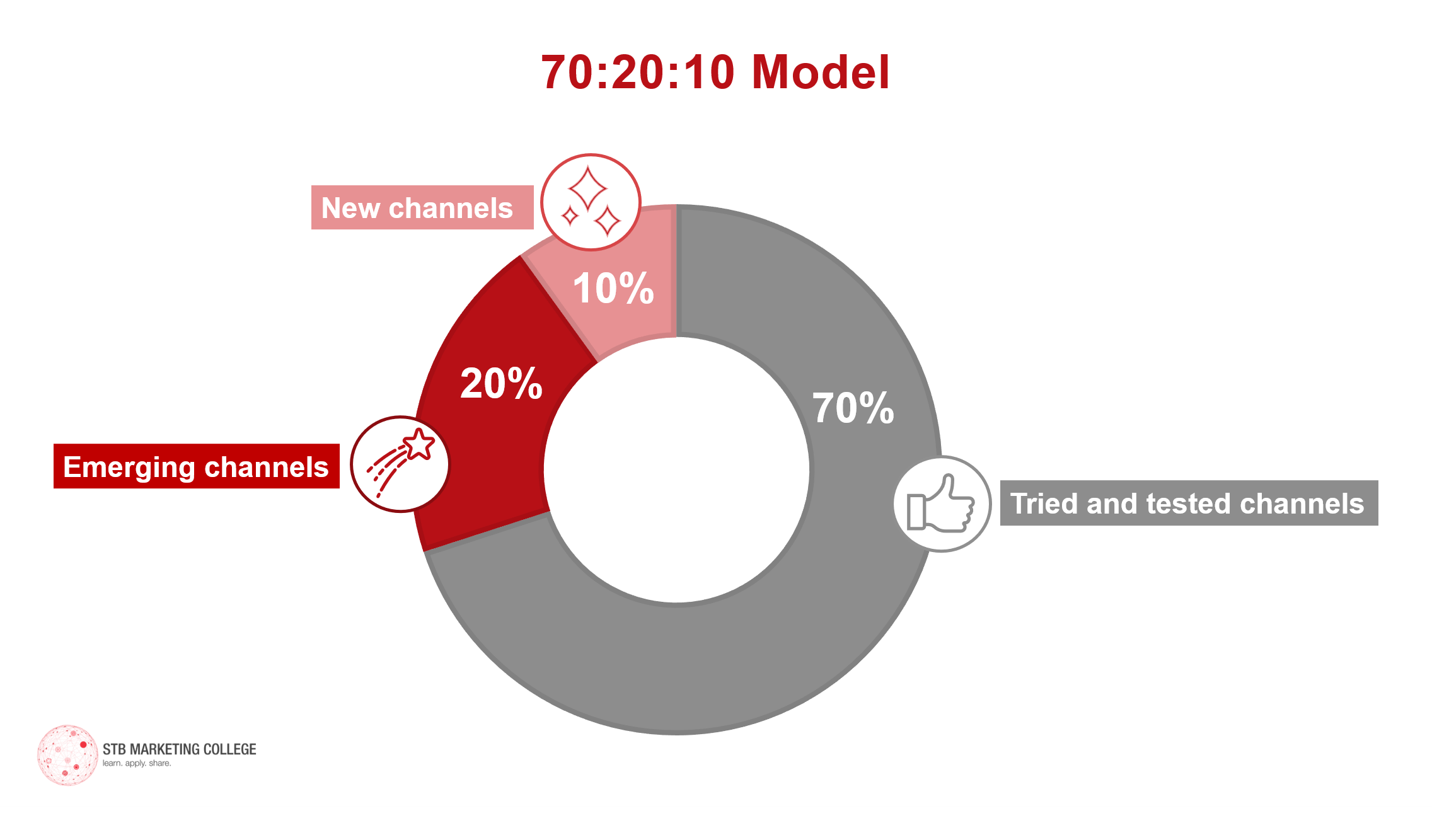
In summary, look out for the following in identifying touchpoints and media planning:
Supports the objective
Clear consumer connection
Mix of tried and trusted and new options
Ensures channels are integrated and have clear roles
Use data to make decisions
Use digital as part of an integrated campaign
Leverage the consumer experience tool
Design digital activation for the person, not for the device
Balance short-term and long-term objectives
Define and monitor digital metrics against communications objectives
Paid, earned, owned media
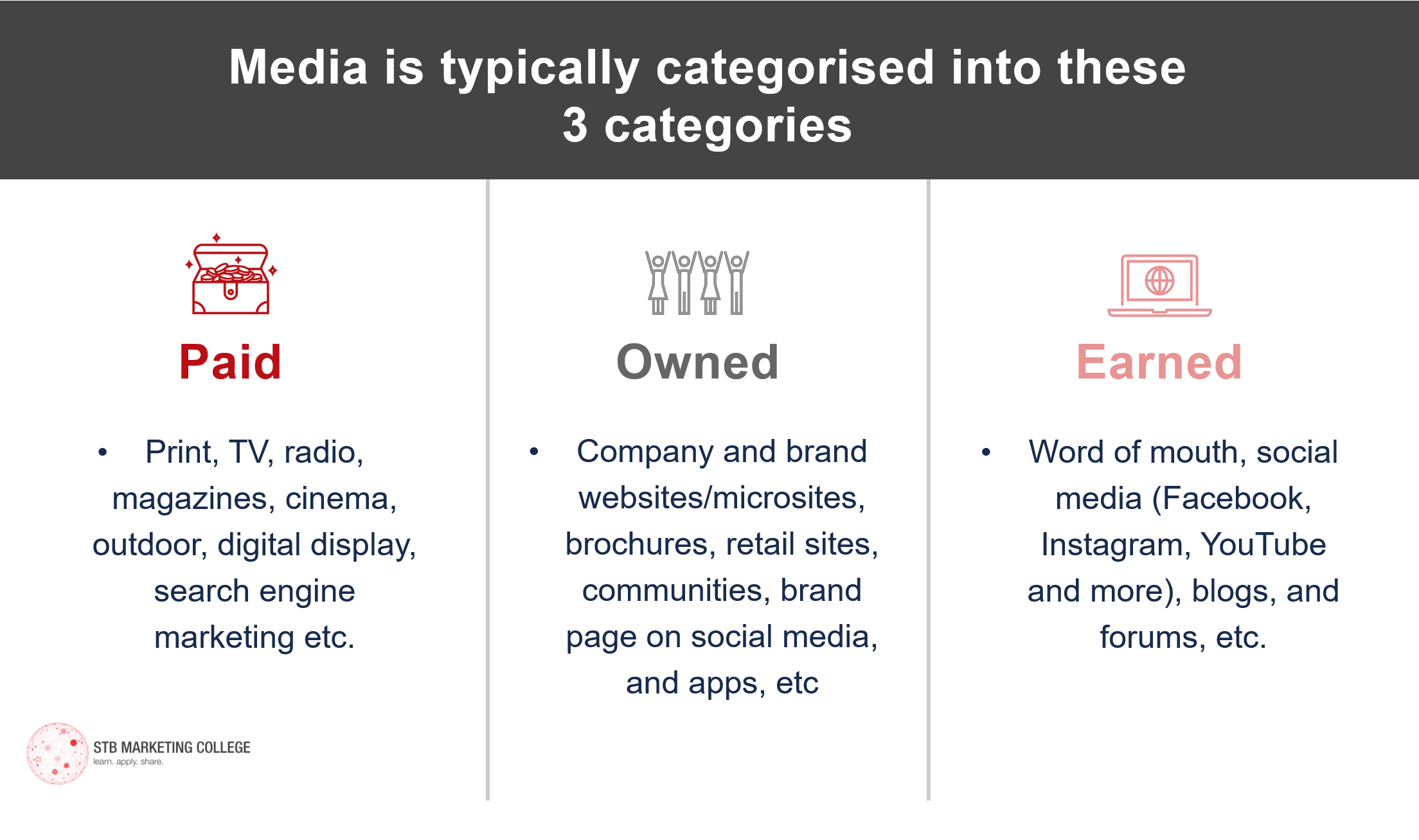
The difference between paid, owned and earned media is not as distinct as it used to be. It will be important to note the interactions between different forms of media and understand the type of content to be developed for each media. To get the best out of each platform, learn how they work and the best practices around them - many of them publish free resources to help you better use their platform. You can also get started by viewing some tips from Facebook and Klook at one of our Masterclass webinars.
If you would like to get started on using social media as part of your integrated marketing planning, check out a social media guide developed for tourists guides. While not all examples may not be relevant to you, the principles stay the same!
Measuring media effectiveness
Pre-Campaign Selection
Start monitoring media effectiveness right at the start of the campaign - it should not be an afterthought! Be sure to select relevant metrics for your set objective before your campaign begins.
For example, if you want to create awareness for your brand / product, you would want to reach as many people as possible. In that case, impressions might be more important to you. The table below summarises the key metrics for each stage of consumer journey. For a glossary of metrics, click here.
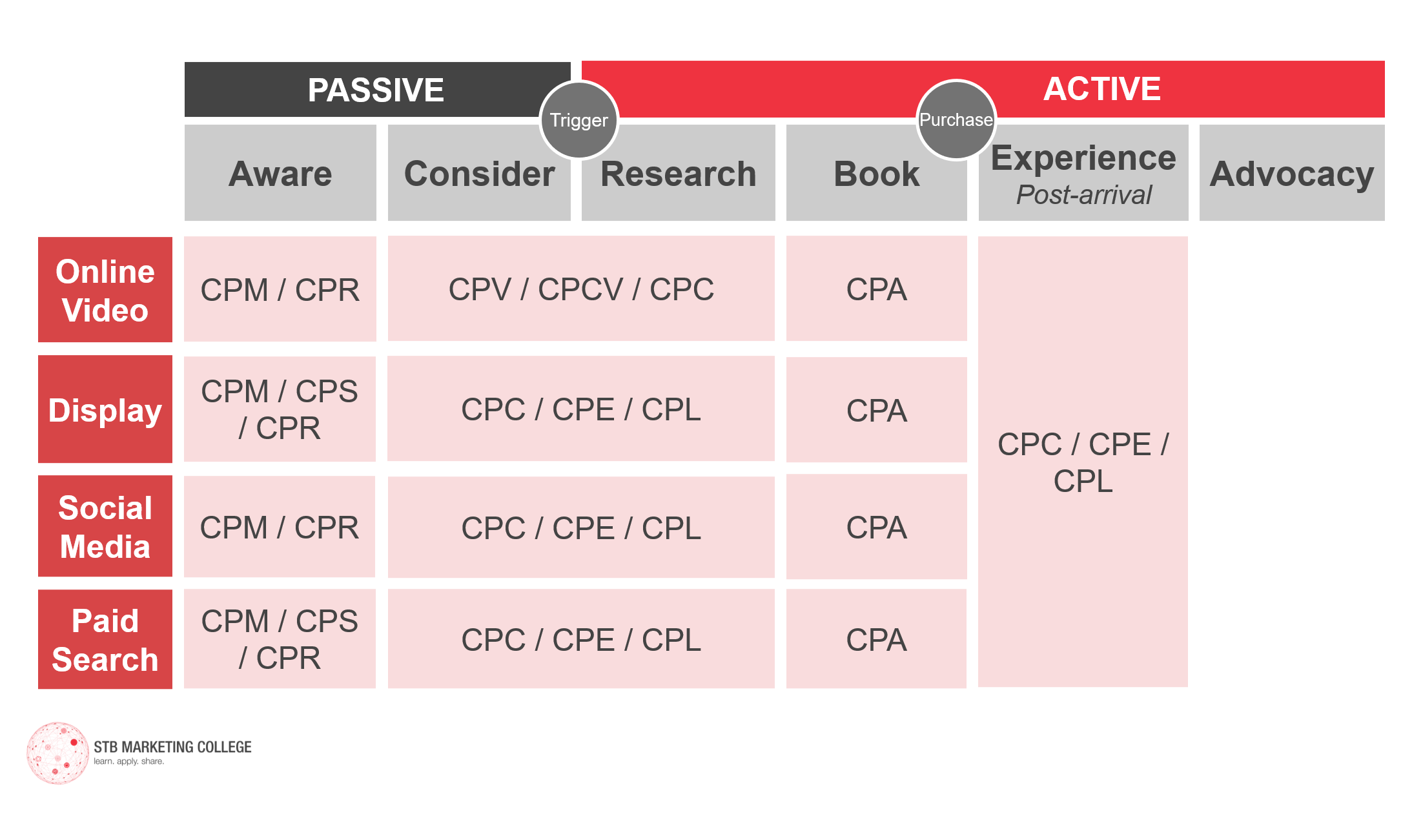
Some common metrics are explained below:
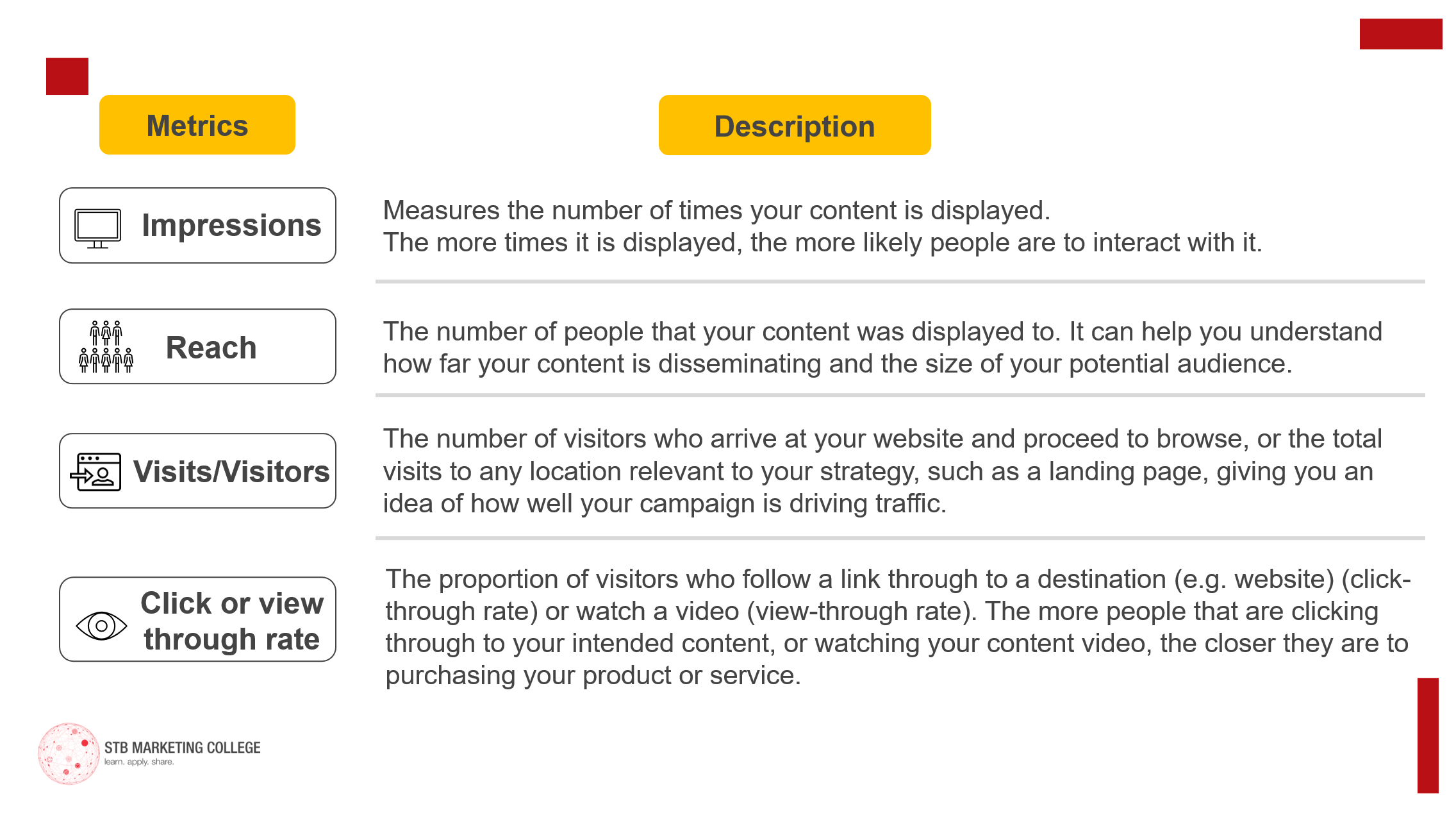
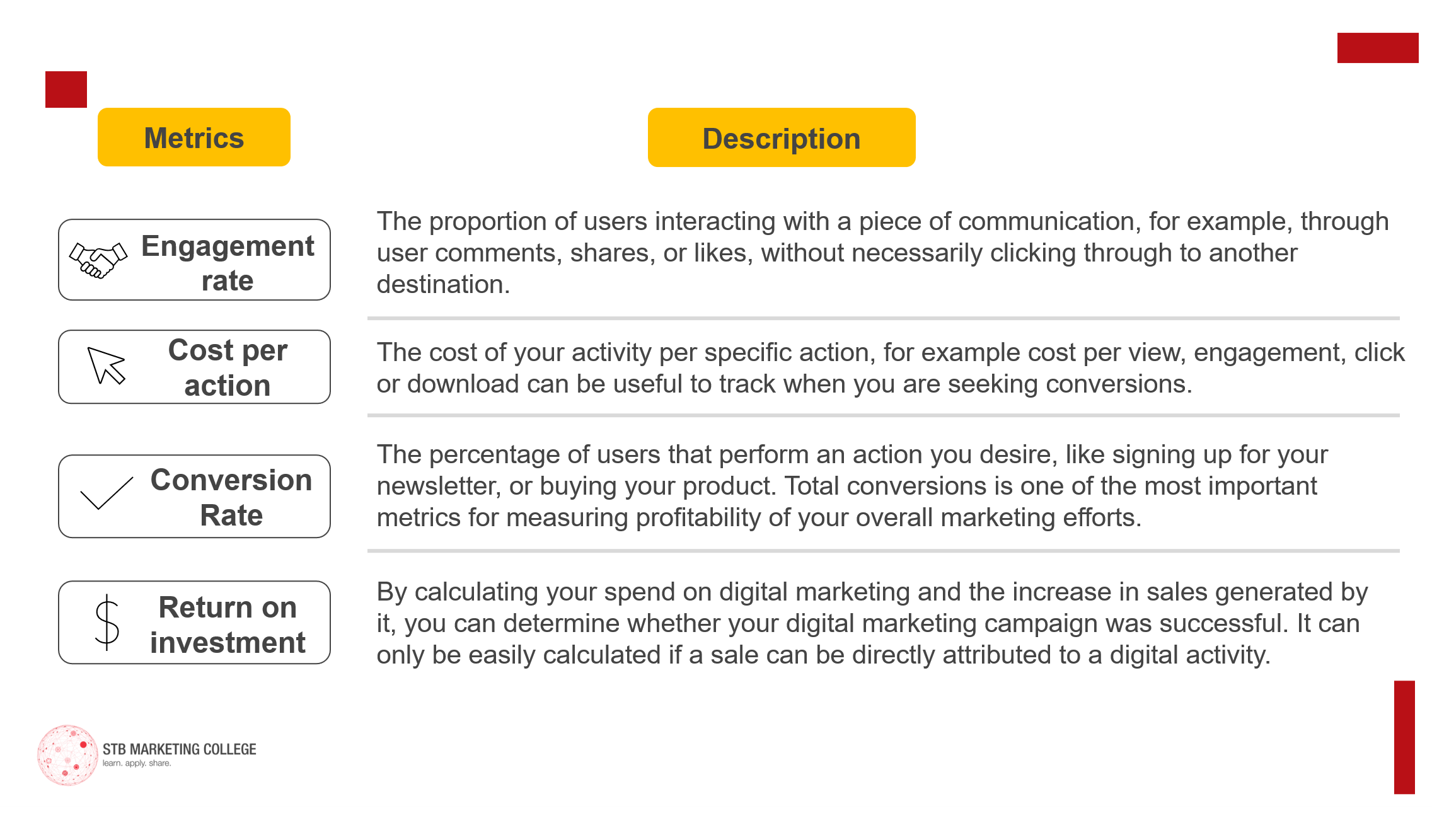
During Campaign Optimisation
As a rule of thumb, two weeks should be sufficient to assess the performance and to make necessary adjustments to stay on course. Monitoring effectiveness during the campaign allows you to optimise your investment toward desired outcomes!
Post Campaign Evaluation
You should always review the campaign performance at the end to learn from it too. Compare your performance with industry benchmarks and historical performance from past campaigns. If you have set clear metrics based on your objectives, you can quickly zoom in on the metrics that count toward your KPIs - the rest of the data gained from the campaign can be additional learnings that do not distract you from what really matters.
Tracking your KPIs can be nerve-wrecking, especially when your campaign is not performing as you would like. However, tracking is the only way to know if your campaign is delivering, and if not, what needs to be fixed. If the campaign is delivering the success you want, you can know what has worked well and can be replicated in future.
Bonus tips
Apart from selecting the right media and metrics for marketing success, monitor your brand safety and look out for ad fraud.
It is important to keep your campaigns - and brand reputation - safe from risky online content or environments. You can do this by generating an include and/or exclude list of websites, genres and keywords.
Ad fraud refers to deliberate activities by fraudsters the prevent the proper delivery of ads to the right people at the right time, in the right place. Common forms of ad fraud include bots and falsely represented sites for fraudsters to siphon money. You don't want to spend precious marketing dollars there!


